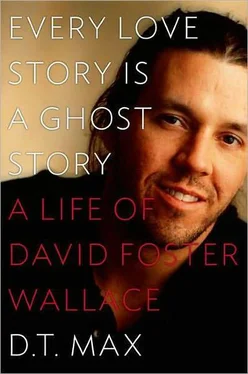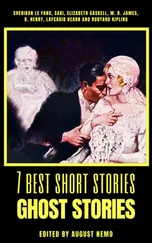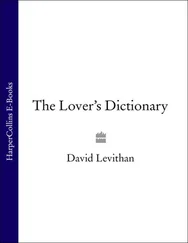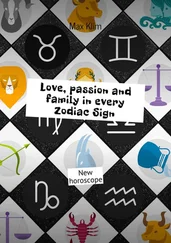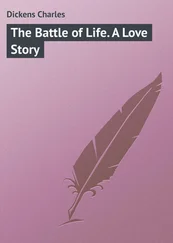It was now the fall and Wallace was more than halfway through the second leave that was supposed to be devoted to his fiction. He started research on the infinity book. His efforts on what he had taken to calling “the Long Thing” did not go well. “Most of my own stuff I’ve been delivering to the wastebasket,” he wrote Markson in November. “It looks good in there.” All the same he was so glad not to be teaching that when he found out that the university was accidentally still paying him, he wrote his department head to say he wouldn’t cash the checks in case they tried to make him pay them back with classes later. But in the spring of 2001, he was back in the classroom, trying to balance his nonfiction, his fiction, and his fears. The article on American usage he had begun when he was with Juliana finally appeared in Harper’s . The magazine ran less than half of what he had originally written but he acknowledged in a note to DeLillo that Colin Harrison, his longtime nonfiction editor there, “did a pretty good cut.”
That summer he went with friends to a two-week meditation retreat at Plum Village near Bordeaux, France, under the Zen master Thich Nhat Hanh. The retreat required abstention from both coffee and smoking. Wallace wanted to understand more deeply what it was he was proposing in The Pale King . What did the bliss that followed great boredom actually feel like? He found that writing about mindlessness and achieving it for oneself were two different things; he left early, blaming the food, and was home as soon as he could be. He wrote to DeLillo on his return, “Highlights: 1) Went AWOL from Viet-Buddhist monast[e]ry’s retreat….2) watched 2 of 4 drunk Peruvians drown in Dordogne off St. Foy La Grande. 3) Ate a snail on purpose.” He mentioned that Franzen, whose third novel, The Corrections, was coming out in mid-September, was “gearing up for his turn at having Sauron’s great red eye upon him.”
The morning of September 11 found Wallace at his usual activities, going to his meeting, running errands, planning to write. At the actual moment of the attacks, he was showering, “trying to listen to a Bears post-mortem on WSCR Sports Radio in Chicago,” as he remembered. He did not know whether he had feelings about the attacks beyond the ordinary, but when Rolling Stone approached him for a piece on his response, he felt drawn to try. In three days, he wrote a short, delicate essay—“Caveat. Written very fast and in what probably qualifies as shock,” he appended to the draft. “The View from Mrs. Thompson’s” is a piece of oblique social analysis, a tribute both to the heartland and recovery. (It was first punningly called “A View from the Interior.”) He once more disguised his recovery group circle as friends from church. Thus Mrs. Thompson, his pseudonym for the mother of Francis B., became “a long-time church member and leader in our congregation.” He captured the essence of her and her friends’ diffuse, gentle articulations as they viewed the awful events, their worries about family in or near Manhattan, and their tears as they watched the towers collapse on television. “What the Bloomington ladies are,” Wallace wrote,
or start to seem, is innocent. There is what would strike many Americans as a bizarre lack of cynicism in the room. It doesn’t once occur to anyone here to remark on how it’s maybe a little odd that…the relentless rerunning of horrific footage might not be just in case some viewers were only now tuning in and hadn’t seen it yet.
He contrasted the sincerity of the women with the attitude of a young man named Duane, also present, whose “main contribution was to keep iterating how much like a movie it is.” Wallace ended, “I’m trying to explain the way part of the horror of the Horror was knowing that whatever America the men in those planes hated so much was far more my own — mine…and poor old loathsome Duane’s — than these ladies’.” Did a certain part of America then deserve what it got? This was a point Wallace of course had to sidestep, but for anyone who had absorbed the lessons of Infinite Jest it was present all the same.
“It’s been a couple of very humbling years,” Wallace wrote Michael Pietsch soon after, admitting the novel was not going forward but insisting he had the maturity now to withstand fallow times: “When there’s sufficient humility and non-seriousness-about-self, it’s not all that bad, more like when the two guys are laughing existentially…at the end of Treasure of the Sierra Madre .” It did hurt, though, that the turn of the millennium had brought with it an abundance of large literary efforts that threatened to push Infinite Jest to the edge of the stage. Dave Eggers’s memoir, A Heartbreaking Work of Staggering Genius , had appeared in 2000, with a quote from Wallace on the jacket praising this “merciless book.” The work sought that characteristic honesty beyond honesty of Wallace’s essays. 20Eggers was also the editor of a new magazine, McSweeney’s . With its self-conscious sense of pleasure and wariness of hype, McSweeney’s shared Wallace’s goal of recording real life in a media-saturated age. (He in fact contributed three stories.) The admiration was mutual: Wallace proposed Eggers to Little, Brown to design Brief Interviews with Hideous Men .
And in September 2001, The Corrections was finally published, a novel Franzen had worked on — as Wallace noted with admiration to Pietsch a month later — for ten years, including “two periods when he threw [away] nearly-completed books he just knew in his gut weren’t right.” Wallace watched with amazement as the book became a bestseller. “I apologize in advance for the fact that I will never make you, me, or our joint employers,” Wallace wrote Pietsch, looking for reassurance, “anything even close to the amount of money he’s making FSG [Farrar, Straus & Giroux], by the way.” In truth he was happy for his friends — sort of — but knew (and cared and didn’t care) that his role as one of the founders of a new kind of writing was threatening to slip into the historical. 21At the same time as he was being pushed aside as its leader, he was being held responsible for its flaws. For many years, critics had asked Wallace if he saw himself as part of a movement, and for as many years he had said no. Back in the early 1990s, he had written Morrow, half-jokingly, to suggest an issue of Conjunctions designed to show how he, Vollmann, and Franzen had nothing in common. When Salon.com inquired at the time of Infinite Jest what he and Franzen, as well as Donald Antrim, Jeffrey Eugenides, Rick Moody, and Richard Powers shared, Wallace responded, “There’s the whole ‘great white male’ deal. I think there are about five of us under 40 who are white and over 6 feet and wear glasses.” Then, in August 2001, James Wood warned in a review of Zadie Smith’s White Teeth in the New Republic that there was a disturbing new trend in fiction: “A genre is hardening…. Familial resemblances are asserting themselves and a parent can be named.” Wood dubbed the new style “Hysterical Realism,” its principal characteristic being a desire
to abolish stillness, as if ashamed of silence…. Stories and sub-stories sprout on every page, as these novels continually flourish their glamorous congestion. Inseparable from this culture of permanent storytelling is the pursuit of vitality at all costs. Indeed, vitality is storytelling, as far as these books are concerned.
Wood believed this freneticism came at the price of intimacy and psychological acuity, the true gifts of the novel. Wallace wasn’t the father of this undesirable new movement in fiction — that was Dickens, in Wood’s conceit — but he was named as one of the louche uncles, corrupting literary youth. And the next year would bring two more additions to the family: Gary Shteyngart’s The Russian Debutante’s Handbook and Jonathan Safran Foer’s Everything Is Illuminated , both debut novels that seemed to owe their exuberance — their commitment to “vitality at all costs”—to Infinite Jest . The irony was that Wallace had now spent half a decade trying to slow down not just literature’s pulse but his own.
Читать дальше
